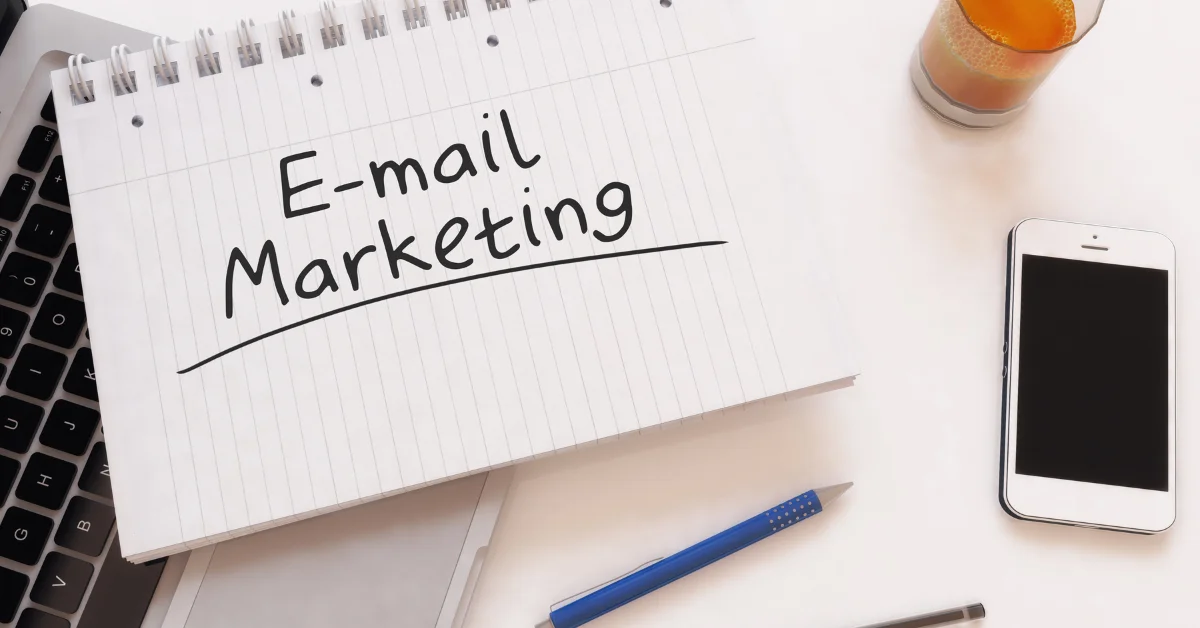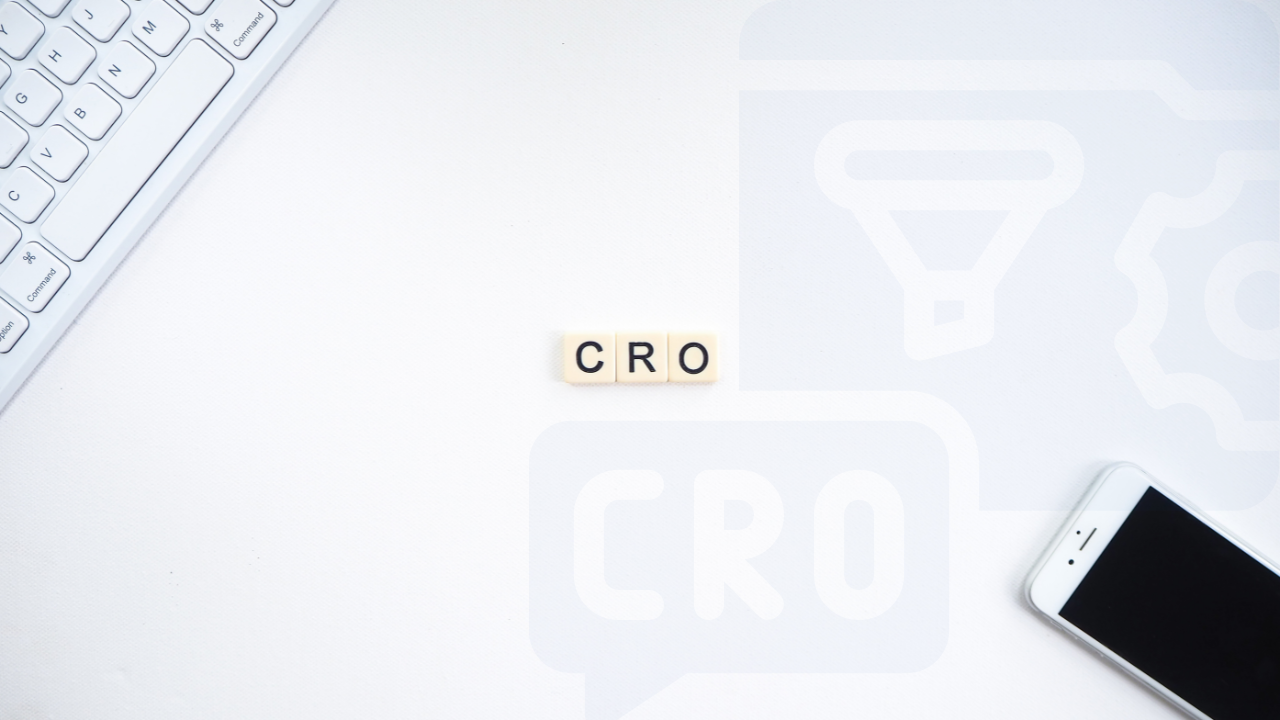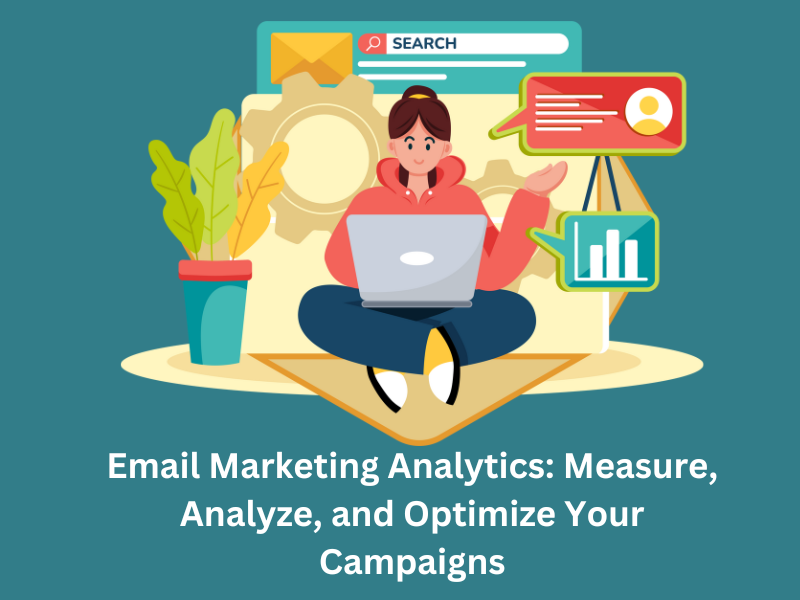In today’s digital age, email marketing remains one of the most powerful tools for businesses to connect with their audience, drive engagement, and boost conversions. However, the introduction of the General Data Protection Regulation (GDPR) in 2018 marked a significant turning point in how businesses handle personal data, particularly in the realm of GDPR email marketing.
GDPR email marketing is a crucial aspect of modern business practices, requiring businesses to navigate a complex landscape of regulations designed to ensure transparency, security, and accountability in how data is collected, stored, and used. Failure to comply with these regulations can lead to severe consequences, including hefty fines and damage to brand reputation.
This comprehensive guide will walk you through everything you need to know about ensuring your email marketing practices are GDPR compliant. From obtaining explicit consent to managing subscriber data and handling unsubscribe requests, we’ll cover it all to help you navigate these regulations with confidence.
Are you ready to learn how to align your email marketing strategies with GDPR and keep your campaigns compliant? Let’s dive in!
What is GDPR?
The General Data Protection Regulation (GDPR) is a robust data privacy law implemented by the European Union (EU) in May 2018. Designed to protect the personal data of individuals within the EU, GDPR is considered one of the most stringent privacy and security laws globally. It applies to any organization that processes or intends to process the personal data of EU citizens, regardless of the organization’s location.
At its core, GDPR is about giving individuals more control over their personal data and ensuring transparency, security, and accountability from organizations that handle such data. For businesses, especially those involved in email marketing, this means adhering to strict rules about how data is collected, stored, and used.
What is GDPR Email Marketing
GDPR email marketing is the practice of sending emails in compliance with the General Data Protection Regulation (GDPR). This European Union law sets strict standards for how businesses collect, store, and use personal data, including email addresses. To comply with GDPR, businesses must obtain explicit consent from individuals before sending them emails, provide clear information about how their data will be used, and offer a simple way to unsubscribe. By following these guidelines, businesses can ensure that their email marketing campaigns are both effective and legal.
Key Principles of GDPR Affecting Email Marketing
- Lawfulness, Fairness, and Transparency: Organizations must process personal data lawfully, fairly, and transparently. This means marketers must clearly inform subscribers about how their data will be used and obtain their explicit consent before sending any marketing communications.
- Purpose Limitation: Personal data must be collected for specified, explicit, and legitimate purposes and not further processed in a manner that is incompatible with those purposes. In email marketing, this means data collected for marketing purposes cannot be used for other, unrelated activities without further consent.
- Data Minimization: Only the data necessary for the intended purpose should be collected. Marketers should avoid asking for excessive information that isn’t required for the marketing activities.
- Accuracy: Personal data must be accurate and, where necessary, kept up to date. Email marketers should regularly update their mailing lists to ensure the accuracy of the information they hold.
- Storage Limitation: Data should not be kept longer than necessary. For email marketers, this implies maintaining a clean and updated list, removing inactive users, and ensuring no old or irrelevant data is stored.
- Integrity and Confidentiality: Personal data must be processed in a manner that ensures appropriate security. This includes protection against unauthorized or unlawful processing, accidental loss, destruction, or damage.
- Accountability: Organizations must be able to demonstrate compliance with GDPR principles. This involves maintaining records of data processing activities and being prepared to show that all data handling practices comply with GDPR.
Understanding these principles is crucial for any organization involved in email marketing. By adhering to GDPR, businesses not only avoid legal penalties but also enhance their reputation and build trust with their audience, which is invaluable in today’s privacy-conscious market.
Key GDPR Requirements for Email Marketing
To ensure compliance with GDPR, email marketers must adhere to specific requirements designed to protect the personal data of individuals and uphold their rights. Understanding these requirements is vital for creating effective and lawful email marketing campaigns. Here are the key GDPR requirements that affect email marketing:
Consent: Understanding Explicit vs. Implicit Consent
One of the most fundamental aspects of GDPR is the concept of consent. Under GDPR, consent must be explicit, informed, and freely given. This means that individuals must be fully aware of what they are consenting to, and they must have the ability to opt-in without any form of coercion or pre-ticked boxes.
- Explicit Consent: For email marketing, explicit consent is required. This involves a clear affirmative action by the individual, such as ticking an unchecked opt-in box or clicking a link to confirm their subscription. The consent must be specific to receiving marketing emails and not bundled with other terms and conditions.
- Implicit Consent: Unlike explicit consent, implicit consent—where consent is assumed through pre-ticked boxes or inactivity—is not compliant under GDPR. Marketers can no longer rely on these methods to build their email lists.
Data Protection: Secure Handling and Storage of Email Data
GDPR mandates that organizations must implement appropriate technical and organizational measures to protect personal data. For email marketing, this means ensuring that all subscriber data is securely stored and protected against unauthorized access, breaches, or other forms of misuse.
- Data Encryption: Use encryption methods to protect personal data during transmission and storage. This ensures that even if data is intercepted or accessed without authorization, it remains unreadable and secure.
- Access Controls: Limit access to subscriber data to authorized personnel only. Implement strong password policies and consider multi-factor authentication to add an additional layer of security.
- Regular Security Audits: Conduct regular security audits to identify vulnerabilities in your data storage and handling processes. This helps to ensure that your data protection measures remain effective and up to date.
Transparency: Informing Subscribers About Data Usage and Rights
Transparency is another key principle of GDPR. Organizations must be open about how they collect, use, and store personal data, and they must clearly inform individuals of their rights under GDPR.
- Privacy Notices: Provide clear and concise privacy notices that explain how you will use subscribers’ data. These notices should be easily accessible, written in plain language, and include information about the subscriber’s rights, such as the right to access, correct, or delete their data.
- Consent Records: Maintain records of how and when consent was obtained from each subscriber. This includes keeping copies of consent forms and records of when subscribers signed up, which helps demonstrate compliance in the event of an audit or inquiry.
Right to be Forgotten: Allowing Users to Unsubscribe and Have Their Data Removed
Under GDPR, individuals have the “right to be forgotten,” which means they can request that their personal data be deleted. For email marketers, this means providing a clear and simple way for subscribers to unsubscribe from your mailing list and ensuring that their data is completely removed from your records if they request it.
- Unsubscribe Options: Make sure every marketing email includes a prominent and easy-to-use unsubscribe link. This should allow subscribers to opt-out of receiving future emails with minimal effort.
- Data Deletion Requests: Implement processes for handling data deletion requests. When a subscriber asks to be forgotten, ensure that their data is promptly removed from all systems, including backups, to comply with GDPR.
By adhering to these key requirements, email marketers can ensure that their practices align with GDPR, safeguarding both their businesses and their subscribers’ data.
Obtaining Explicit Consent for Email Marketing
One of the most crucial aspects of GDPR compliance in email marketing is obtaining explicit consent from your subscribers. Explicit consent is the cornerstone of GDPR, ensuring that individuals have complete control over their personal data and how it is used. For email marketers, obtaining explicit consent means getting clear and informed permission from individuals before sending them any marketing communications.
Best Practices for Crafting Consent Requests
Obtaining consent under GDPR isn’t just about asking for permission; it’s about how you ask for it. The consent request must be presented in a way that is easy to understand, transparent, and free of any ambiguity or pressure.
- Clear and Concise Language: Use straightforward language when requesting consent. Avoid legal jargon or complex terms that might confuse potential subscribers. The goal is to ensure that subscribers understand exactly what they are consenting to.
- Separate Consent Requests: Ensure that your consent request is separate from other terms and conditions. Consent should not be bundled with other agreements or be a precondition for signing up for a service unless it is strictly necessary.
- Specific Purpose: Clearly state the purpose for which you are requesting consent. For example, if you plan to use the data for email marketing, specify this directly in your consent request.
- Granular Options: Offer subscribers granular options for consent. Instead of a single blanket consent, provide choices that allow individuals to consent to different types of communications or data processing activities separately.
Examples of Compliant Opt-In Forms and Privacy Notices
To help you better understand how to implement GDPR-compliant consent practices, here are some examples of what effective opt-in forms and privacy notices might look like:
Opt-In Form Example:
- Checkbox with Clear Description: “I would like to receive the monthly newsletter and updates about new products and promotions via email.”
- Double Opt-In: After the user checks the box, they receive a confirmation email asking them to verify their subscription by clicking a link. This ensures the user is actively opting in.
Privacy Notice Example:
- Simple and Transparent: “We respect your privacy. By subscribing to our newsletter, you agree to receive emails from us regarding our products, services, and promotions. You can unsubscribe at any time. For more details, please see our privacy policy.”
Importance of Using Clear, Simple Language in Consent Forms
The language used in your consent forms should leave no room for misunderstanding. It’s essential to ensure that individuals are fully aware of what they are signing up for and that their consent is genuinely informed.
- Avoid Ambiguous Phrases: Phrases like “We may share your data with third parties for marketing purposes” are vague and not GDPR-compliant. Instead, use direct language: “We will send you emails about our products, services, and promotions.”
- Be Transparent About Data Sharing: If you intend to share subscriber data with third parties, this must be explicitly stated. Subscribers should know exactly what will happen to their data once they provide consent.
By following these best practices, email marketers can obtain explicit consent that is both GDPR-compliant and respectful of their subscribers’ privacy rights. This not only helps in avoiding legal pitfalls but also builds a foundation of trust and transparency with your audience.
Managing Email Lists and Subscriber Data
Managing your email lists and subscriber data in compliance with GDPR is essential to ensuring that you not only respect the privacy rights of your audience but also avoid potential fines and penalties. Proper management of subscriber data involves maintaining accurate records, regularly updating your email lists, and ensuring that all data processing activities are transparent and secure.

How to Maintain GDPR-Compliant Email Lists
To comply with GDPR, businesses must take a proactive approach to managing their email lists. This involves more than just keeping a list of names and email addresses—it requires a comprehensive understanding of data protection principles and a commitment to transparency and accountability.
- Collect Data with Consent: Ensure that all data in your email lists has been collected with explicit consent from the subscribers. This means having a clear record of how and when each individual opted in to receive marketing communications.
- Regularly Update and Audit Your Lists: Regular audits of your email lists help ensure that all subscriber data is accurate, up-to-date, and relevant. Remove any inactive subscribers, outdated information, or data that was collected without proper consent.
- Segment Your Lists: Segmenting your email lists based on subscribers’ preferences and behaviors not only helps in targeting your campaigns more effectively but also ensures that you are sending relevant content to your audience. This aligns with GDPR’s principle of data minimization, which advocates for the collection and use of only necessary data.
Strategies for Regularly Updating and Auditing Subscriber Data
Maintaining a clean and compliant email list requires regular updates and audits. Here are some strategies to help you keep your data accurate and compliant:
- Use Re-Engagement Campaigns: Periodically run re-engagement campaigns to verify that your subscribers are still interested in receiving your emails. Ask inactive subscribers to confirm their interest in staying on your list. If they do not respond, consider removing them to maintain a compliant email list.
- Implement Automated Tools: Use automated tools and software to monitor your email lists for inactive users and outdated information. These tools can help you automatically remove or update data based on specific criteria, such as engagement levels or the date of the last interaction.
- Conduct Regular Audits: Schedule regular audits of your email lists to ensure all data is compliant with GDPR. During these audits, check for proper consent records, verify the accuracy of subscriber information, and ensure all data processing activities are documented.
Ensuring Data Accuracy and Relevance for Targeted Marketing
Accurate and relevant data is crucial for effective email marketing. Not only does it enhance the effectiveness of your campaigns, but it also ensures compliance with GDPR’s principles of data accuracy and purpose limitation.
- Collect Only Necessary Information: Avoid collecting more information than you need. For example, if you only need an email address to send newsletters, there is no need to collect additional personal data such as phone numbers or addresses.
- Encourage Subscribers to Update Their Information: Provide easy ways for subscribers to update their information. For example, include a link in your emails that directs them to a preference center where they can manage their subscription details.
- Remove Inactive Subscribers: Keeping inactive subscribers in your email list can lead to low engagement rates and potentially violate GDPR if you are storing their data without a legitimate purpose. Regularly removing inactive subscribers ensures your data is accurate and relevant.
By following these practices, you can ensure that your email lists are not only effective for your marketing strategies but also fully compliant with GDPR. Proper management of subscriber data builds trust with your audience and demonstrates a commitment to respecting their privacy.
Handling Unsubscribe Requests and Data Deletion
Under GDPR, individuals have the right to withdraw their consent and request the deletion of their personal data at any time. For email marketers, this translates to handling unsubscribe requests promptly and ensuring data deletion processes are efficient and transparent. Properly managing these requests not only keeps you compliant but also helps maintain a positive relationship with your subscribers.
Steps for Setting Up a User-Friendly Unsubscribe Process
A straightforward and user-friendly unsubscribe process is essential for GDPR compliance. It empowers subscribers by giving them control over their data and ensures that you are respecting their preferences.
- Prominent Unsubscribe Link: Every marketing email should include a clearly visible unsubscribe link. This link should be easy to find, typically located at the bottom of the email, and should be labeled in a way that is unmistakable, such as “Unsubscribe” or “Manage Your Preferences.”
- One-Click Unsubscription: Make the unsubscribe process as simple as possible. Ideally, subscribers should be able to unsubscribe with a single click. Avoid requiring them to log in or fill out lengthy forms, as this can be frustrating and may discourage them from unsubscribing, leading to potential GDPR violations.
- Confirmation of Unsubscription: After a subscriber clicks the unsubscribe link, provide a confirmation message to let them know that their request has been processed. This not only reassures them that their request has been received but also provides a record of the action for your compliance documentation.
How to Handle Data Deletion Requests in Compliance with GDPR
GDPR gives individuals the “right to be forgotten,” meaning they can request that their personal data be erased from your systems. Handling these requests efficiently is crucial to maintaining compliance and building trust with your audience.
- Create a Data Deletion Policy: Develop a clear policy for handling data deletion requests. This policy should outline the steps your organization will take to delete personal data, including timelines for processing requests and methods for verifying the identity of the person making the request.
- Implement Automated Systems: Automate the data deletion process wherever possible to ensure that requests are handled promptly and accurately. Automated systems can help track requests, manage data removal across multiple platforms, and ensure that all copies of the data are deleted, including backups.
- Communicate with the Requester: Keep the requester informed throughout the deletion process. Acknowledge receipt of the request, provide an estimated timeline for completion, and notify them once their data has been deleted. Transparency is key to maintaining trust and demonstrating compliance.
Record-Keeping Practices to Demonstrate Compliance
Under GDPR, organizations must be able to demonstrate compliance with all regulations, including how they handle unsubscribe requests and data deletion.
- Document All Requests: Keep detailed records of all unsubscribe and data deletion requests, including the date and time the request was made, the action taken, and any communications with the requester. These records can serve as proof of compliance in case of an audit or legal inquiry.
- Regular Compliance Audits: Conduct regular audits of your data management processes to ensure that all unsubscribe and data deletion procedures are being followed correctly. This helps identify any potential gaps in compliance and provides an opportunity to update your processes as needed.
By implementing these practices, you can ensure that your handling of unsubscribe requests and data deletion is fully compliant with GDPR. This not only helps you avoid potential legal issues but also fosters a sense of trust and respect with your subscribers, which is invaluable in maintaining a loyal and engaged audience.
Regular Audits and Compliance Checks
Regular audits and compliance checks are essential components of a GDPR-compliant email marketing strategy. These practices help ensure that your data management processes remain aligned with GDPR regulations and that any potential issues are identified and resolved promptly. Conducting audits and checks not only protects your business from legal risks but also reinforces your commitment to data privacy and security.
Importance of Conducting Regular Audits of Email Marketing Practices
Regular audits of your email marketing practices are crucial for maintaining GDPR compliance. Audits allow you to review your data collection, storage, and processing activities, ensuring they align with GDPR requirements and industry best practices.
- Identify Compliance Gaps: Audits help identify any gaps or weaknesses in your data management processes. This could include outdated consent records, improperly stored data, or inadequate security measures. By identifying these issues early, you can take corrective action before they lead to compliance breaches.
- Maintain Up-to-Date Documentation: Regular audits ensure that all documentation related to GDPR compliance is current and accurate. This includes consent records, data processing agreements, and records of data deletion requests. Up-to-date documentation is vital for demonstrating compliance during audits or investigations.
- Improve Data Management Practices: Through regular audits, you can continuously improve your data management practices. This could involve updating your privacy policies, enhancing data security measures, or refining your consent collection processes. Regular improvements help keep your practices aligned with evolving regulations and best practices.
Tools and Resources for Ensuring Ongoing Compliance
Several tools and resources can help you ensure ongoing compliance with GDPR in your email marketing efforts. These tools provide automated solutions for managing consent, monitoring data usage, and conducting regular compliance checks.
- GDPR Compliance Software: Many GDPR compliance software solutions offer features like automated consent management, data encryption, and compliance reporting. These tools can help streamline your compliance efforts, ensuring that all aspects of your email marketing practices align with GDPR requirements.
- Email Marketing Platforms with Built-In Compliance Features: Some email marketing platforms include built-in GDPR compliance features, such as automated double opt-in processes, easy unsubscribe options, and detailed analytics. Using these platforms can simplify compliance and reduce the risk of non-compliance.
- Data Protection Officers (DPOs) and Legal Consultants: If you have the resources, consider hiring a Data Protection Officer (DPO) or consulting with legal professionals who specialize in GDPR compliance. These experts can provide valuable insights and guidance, helping you navigate the complexities of GDPR and avoid potential pitfalls.
Steps to Take if Non-Compliance is Discovered
If your audits reveal any areas of non-compliance, it’s crucial to act swiftly to address the issues. Here’s what you should do if non-compliance is discovered:
- Assess the Severity: Determine the severity of the non-compliance issue and the potential impact on your business and your subscribers. For minor issues, such as missing consent records, take immediate steps to rectify the problem. For more severe breaches, such as unauthorized data access, consider notifying the relevant data protection authority and affected individuals.
- Implement Corrective Actions: Develop and implement a plan to address the non-compliance issue. This could involve updating your data management practices, retraining staff, or enhancing your security measures. Ensure that the corrective actions are documented and monitored to prevent similar issues in the future.
- Review and Update Policies: After addressing the immediate issue, review and update your policies and procedures to prevent future non-compliance. This could include revising your consent collection methods, enhancing your data protection policies, or conducting more frequent audits.
By conducting regular audits and compliance checks, you can ensure that your email marketing practices remain aligned with GDPR requirements. This not only protects your business from potential fines and penalties but also demonstrates your commitment to data privacy and security.
GDPR Compliance Beyond Europe
While the General Data Protection Regulation (GDPR) was enacted by the European Union (EU), its impact stretches far beyond Europe’s borders. Any business that collects or processes the personal data of EU citizens must comply with GDPR, regardless of where the company is based. For many organizations outside the EU, this means adopting GDPR-compliant practices, especially in email marketing, to avoid penalties and build trust with international customers.
Why Non-EU Companies Must Comply with GDPR When Targeting EU Citizens
GDPR applies to any organization that offers goods or services to individuals in the EU or monitors the behavior of EU citizens, even if the business operates outside of Europe. This extraterritorial scope means that non-EU companies must comply with GDPR when:
- Offering Goods or Services to EU Residents: If your business markets products or services to EU residents, whether free or paid, you are subject to GDPR. This includes scenarios where your website is accessible to EU citizens, your marketing campaigns target EU customers, or your customer service caters to EU-based individuals.
- Monitoring Behavior of EU Citizens: GDPR applies if you monitor the behavior of EU citizens on your website, such as tracking their browsing habits, using cookies, or collecting data for targeted advertising. This provision aims to protect the privacy of EU citizens regardless of where the data processing takes place.
Understanding the Global Impact of GDPR on Email Marketing Practices
GDPR has set a new global standard for data protection, influencing privacy laws and regulations worldwide. Many countries have introduced or updated their own data protection laws to align with GDPR, creating a more unified approach to data privacy. Here’s how GDPR impacts email marketing practices globally:
- Raising the Bar for Privacy Standards: GDPR has raised the bar for privacy standards worldwide. Even companies outside the EU are adopting GDPR principles to demonstrate their commitment to data privacy and build trust with international customers. By following GDPR guidelines, businesses can ensure they meet the highest data protection standards, enhancing their reputation and competitiveness in the global market.
- Encouraging Transparency and Trust: GDPR promotes transparency and trust in data handling practices. By complying with GDPR, businesses can show their customers that they value privacy and are committed to protecting personal data. This trust can lead to stronger customer relationships and increased loyalty, especially in regions where privacy concerns are growing.
- Influencing Other Data Protection Laws: The success and influence of GDPR have led to the introduction of similar laws in other countries, such as the California Consumer Privacy Act (CCPA) in the United States and the Personal Information Protection and Electronic Documents Act (PIPEDA) in Canada. Complying with GDPR helps businesses prepare for and adapt to these new regulations, ensuring a consistent approach to data privacy across different markets.
Best Practices for Non-EU Companies to Ensure GDPR Compliance
For non-EU companies, ensuring GDPR compliance requires a proactive approach to data protection. Here are some best practices to help you comply with GDPR when targeting EU citizens:
- Understand GDPR Requirements: Familiarize yourself with GDPR requirements and how they apply to your business. This includes understanding key principles such as consent, data protection, and transparency, and how they relate to your email marketing activities.
- Review and Update Your Privacy Policies: Ensure your privacy policies are transparent, up-to-date, and GDPR-compliant. Clearly explain how you collect, use, and protect personal data, and provide information about individuals’ rights under GDPR.
- Implement GDPR-Compliant Consent Mechanisms: Use GDPR-compliant consent mechanisms for collecting email addresses and other personal data. This includes obtaining explicit consent, providing clear opt-in options, and maintaining records of all consent obtained.
- Conduct Regular Audits: Regularly audit your email marketing practices to ensure ongoing GDPR compliance. This includes reviewing your data collection processes, checking your consent records, and ensuring your data protection measures are effective.
By understanding the global impact of GDPR and implementing best practices, non-EU companies can ensure compliance with GDPR and build trust with customers worldwide. This not only helps avoid legal issues but also enhances your brand’s reputation and competitiveness in the global market.
Common Mistakes and How to Avoid Them
Even with the best intentions, many businesses inadvertently make mistakes when trying to comply with GDPR in their email marketing practices. These mistakes can lead to significant fines, damage to reputation, and loss of customer trust. By understanding these common pitfalls and learning how to avoid them, you can better navigate the complexities of GDPR compliance and protect your business from potential risks.
Overview of Frequent GDPR Compliance Errors in Email Marketing
Using Pre-Ticked Consent Boxes:
- Mistake: Some companies still use pre-ticked checkboxes as a way of obtaining consent from users. Under GDPR, consent must be an affirmative action, meaning that users need to actively opt-in to receiving communications.
- Solution: Ensure all consent mechanisms require active opt-in from users, such as manually ticking a box or selecting a specific option that clearly indicates consent.
Not Providing Clear Opt-Out Mechanisms:
- Mistake: Failing to include a clear and easy-to-use unsubscribe link in every email communication is a common mistake. GDPR requires that subscribers must be able to easily withdraw their consent and opt out of receiving future emails.
- Solution: Include a prominent and easy-to-find unsubscribe link in every email. This link should take users directly to a page where they can unsubscribe without any additional steps or requirements.
Collecting Excessive Data:
- Mistake: Collecting more data than is necessary for the purpose of the email marketing campaign can lead to GDPR violations. For example, asking for a phone number when only an email address is needed for a newsletter subscription.
- Solution: Practice data minimization by only collecting data that is strictly necessary for the specific purpose. Review your data collection forms and remove any fields that are not essential for the service being offered.
Failing to Keep Accurate Consent Records:
- Mistake: Not keeping proper records of how and when consent was obtained can be a major compliance issue under GDPR. In the event of a dispute or audit, businesses need to be able to demonstrate that consent was obtained in a compliant manner.
- Solution: Implement a system for recording consent that includes details such as the date of consent, the specific consent statement agreed to, and any changes to consent terms. This documentation should be easily accessible and stored securely.
Neglecting to Update Privacy Policies:
- Mistake: Many businesses overlook the importance of updating their privacy policies to reflect GDPR requirements. A privacy policy that doesn’t clearly explain how data is used and what rights individuals have under GDPR is non-compliant.
- Solution: Regularly review and update your privacy policies to ensure they are comprehensive, easy to understand, and reflect current GDPR regulations. Clearly outline what data is collected, how it is used, and how individuals can exercise their rights.
Tips for Avoiding These Pitfalls and Staying Compliant
Stay Educated on GDPR Requirements:
- Continuously educate yourself and your team on GDPR requirements and any updates to the regulation. Regular training sessions and workshops can help ensure everyone is aware of their responsibilities and how to implement GDPR-compliant practices.
Perform Regular Compliance Audits:
- Conduct regular audits of your email marketing practices to identify any areas of non-compliance and address them promptly. Audits should cover all aspects of your data collection, storage, and processing activities, as well as your consent mechanisms and privacy policies.
Use GDPR-Compliant Tools and Platforms:
- Utilize email marketing platforms and tools that are designed to be GDPR-compliant. These tools often come with built-in features such as double opt-in forms, automated consent management, and easy unsubscribe options, which can simplify the compliance process.
Engage a Data Protection Officer (DPO) or Legal Advisor:
- If you have the resources, consider hiring a Data Protection Officer (DPO) or consulting with a legal advisor who specializes in GDPR compliance. They can provide expert guidance on how to navigate the complexities of GDPR and ensure your practices are compliant.
By understanding these common mistakes and implementing strategies to avoid them, you can ensure that your email marketing efforts are GDPR-compliant and build trust with your audience. This proactive approach not only protects your business from potential legal issues but also demonstrates your commitment to data privacy and security.
Conclusion
Navigating the complexities of GDPR compliance in email marketing may seem daunting, but it is essential for protecting your business and building trust with your subscribers. By understanding the core principles of GDPR and implementing best practices, you can create effective email marketing strategies that respect your audience’s privacy and comply with legal requirements.
Throughout this guide, we’ve explored the various aspects of GDPR compliance, from obtaining explicit consent to managing subscriber data and handling unsubscribe requests. By focusing on these key areas, you can ensure that your email marketing practices align with GDPR regulations, reducing the risk of penalties and enhancing your reputation as a responsible marketer.
Regular audits, clear privacy policies, and transparent communication are the pillars of a compliant email marketing strategy. By prioritizing these elements, you not only stay within the bounds of the law but also foster a culture of trust and respect with your audience. Remember, GDPR compliance isn’t just about avoiding fines; it’s about demonstrating your commitment to protecting your customers’ personal data and building long-lasting relationships.
As the digital landscape continues to evolve, staying informed and proactive about data privacy will remain crucial. By adopting a GDPR-compliant approach to email marketing, you can position your business as a leader in data protection, gaining a competitive edge in an increasingly privacy-conscious market.
Thank you for taking the time to read this comprehensive guide. We hope it has provided valuable insights and practical tips to help you ensure your email marketing is GDPR-compliant. Remember, compliance is an ongoing process, and staying up to date with the latest regulations and best practices will keep your marketing efforts both effective and lawful.










